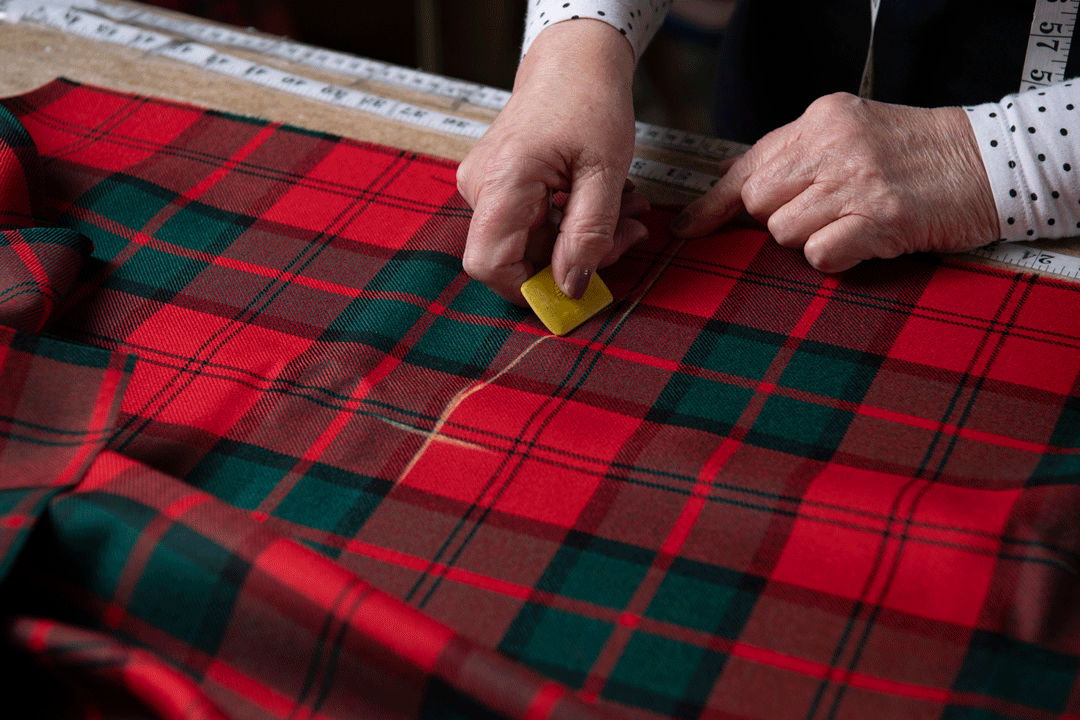 How many yards in a kilt?
How many yards in a kilt?
Starting with the basics, it’s important to understand what a kilt is actually creafted from. As mentioned previously, a kilt is made from a single length of tartan material. The amount of material that goes into making a kilt is measured in yards, which is why you will often see or hear a kilt being classified by yardage. The most popular and most traditional length of a kilt is an eight-yard option. There are also five and seven-yard options but as the material gets shorter, the way the kilt will look and feel changes. The more material a kilt is made from, the heavier it becomes and the thinner the pleats get. The less material used the lighter it gets and the bigger the pleats become. There is no right or wrong choice when it comes to selecting your kilts yardage, some prefer a heavier kilt while some prefer a lighter option for warmer climates, the choice is yours.
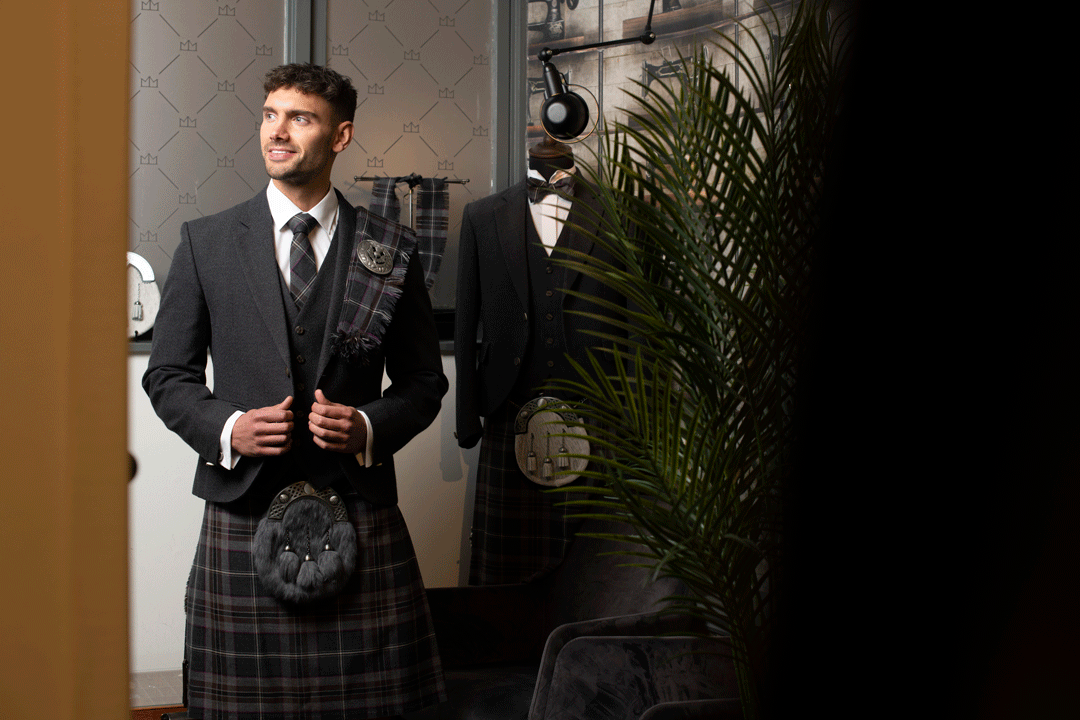 How to wear a kilt?
How to wear a kilt?
First and foremost, the pleats go at the back. For the most part, you’ll be excused for getting a few things wrong but make the mistake of wearing your pleats at the front and you’ll never hear the end of it. The kilt is wrapped around your body in a clockwise fashion and positioned on or just below your navel, with the bottom of the kilt falling roughly mid-knee. There are buckles on either side of the kilt. The first buckle is on the left and the strap is fed through the top layer of the kilt and secured. On the right of the kilt, buckles are found towards the end of the kilt's apron and secured to the bottom layer of the kilt. The kilt should be worn tight enough to not fall down throughout the duration of your wear but loose enough to be comfortable.
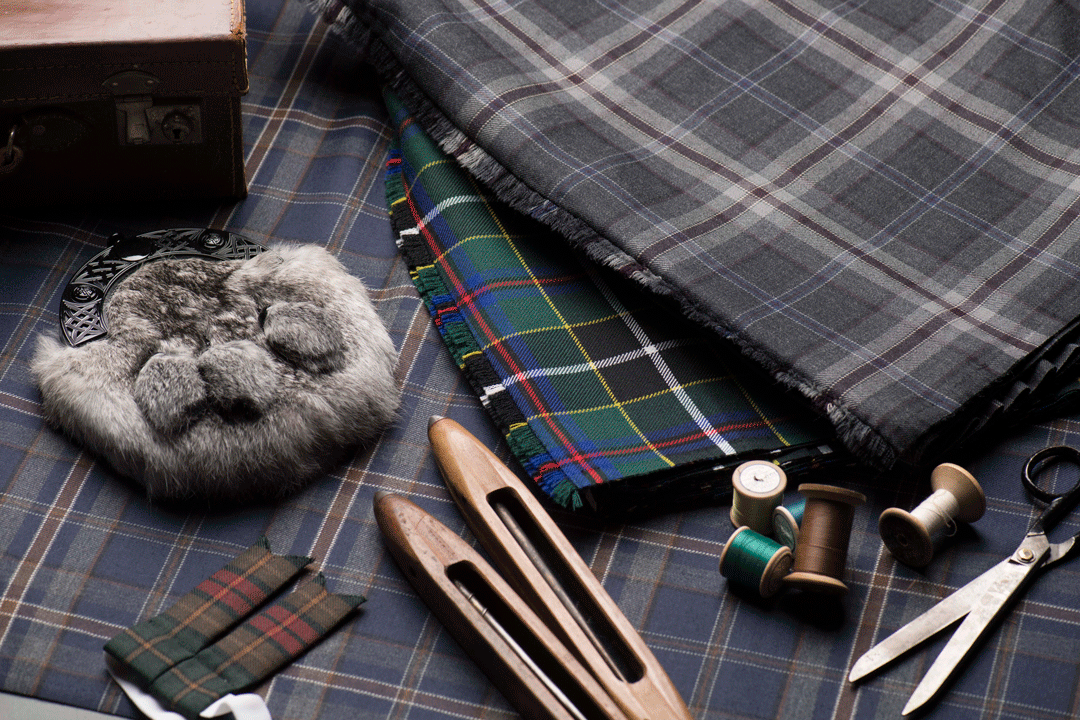 How to wear kilt socks and flashes?
How to wear kilt socks and flashes?
Kilt flashes are multi-functional accessories to your highlandwear outfit. Not only do they look great and add a touch of flare, flashes actually help your socks stay up throughout your event. The flashes are the part you see hanging from below the fold of the sock, often in matching tartan or plain block colours. The part you don’t see is the garter that’s attached to them. The garter is an elasticated band that is secured by a clip and hidden under the socks’ fold. Flashes are worn on the outside of your leg and adjusted so they show just a couple of inches of the material. Your sock height should sit a few inches below the knee and should be adjusted before the flashes are put on.
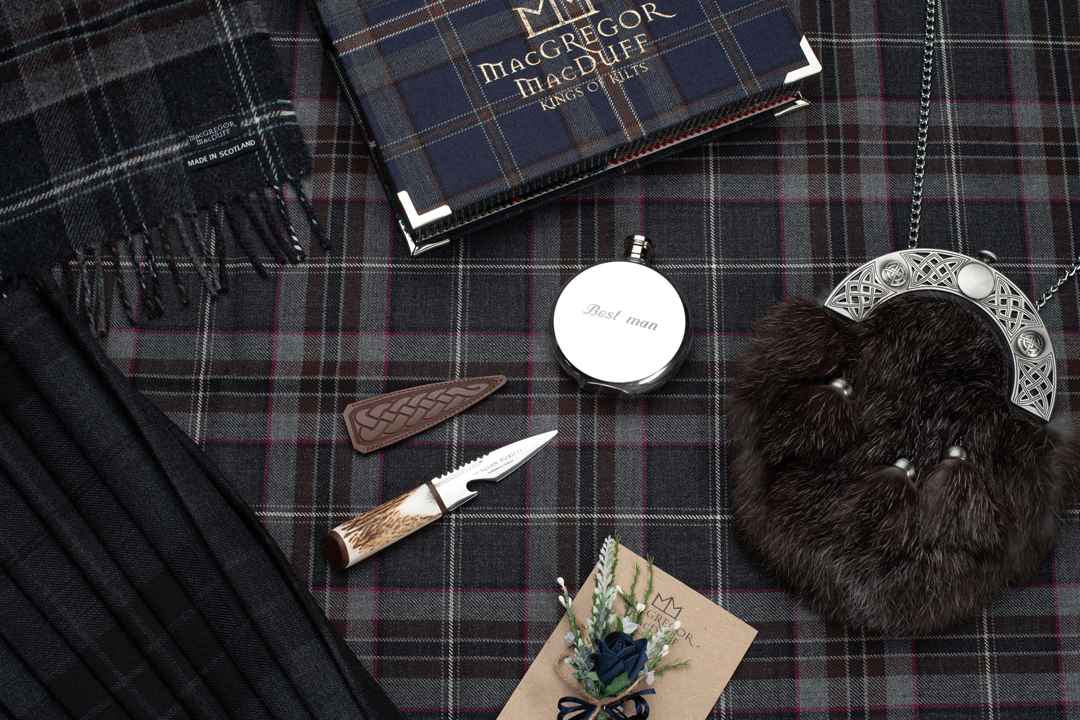 Where to place a sgian dubh?
Where to place a sgian dubh?
The sgian dubh is placed in the top of the sock on the same side as your dominant hand, with a couple of inches of the sgian dubh handle poking out. ‘Sgian dubh’ is a Scottish Gaelic word that translates to ‘black blade’. A sgian dubh would have traditionally been an all-purpose knife, carried by a highlander for a range of daily needs. Today it is a ceremonial accessory and often sgian dubhs don’t even have real blades, although sgian dubhs with real stainless steel blades are available. Just make sure you check the local laws about carrying a knife on you to make sure it’s legal where you plan to wear your highlandwear outfit.
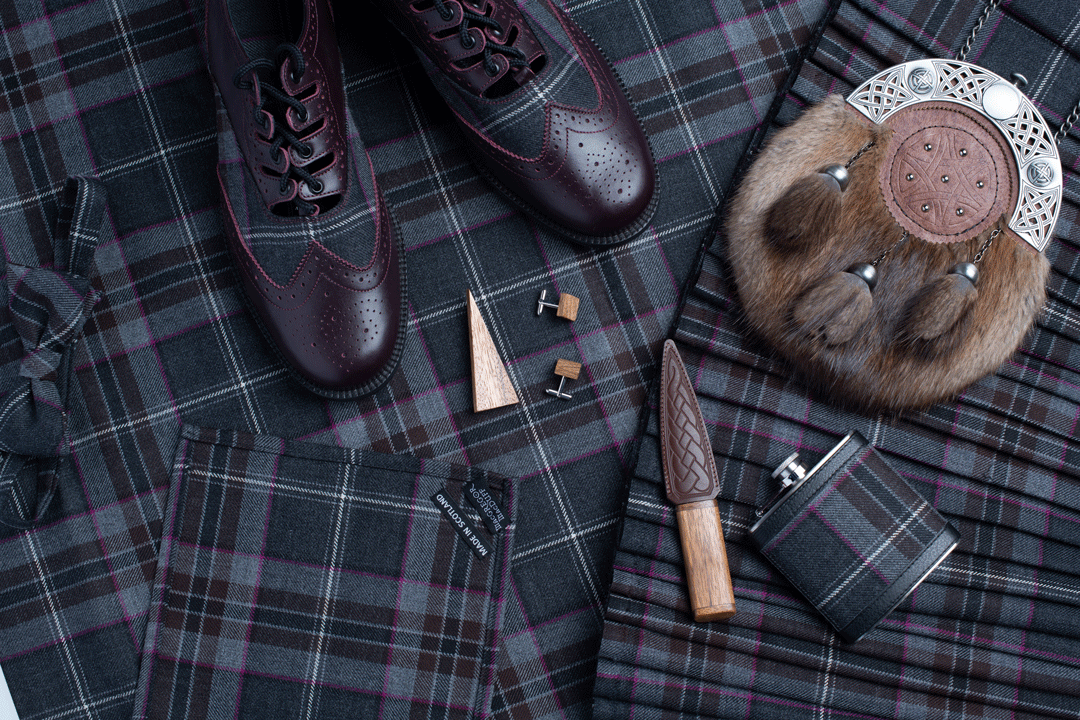 How to tie ghillie brogues?
How to tie ghillie brogues?
How to actually tie ghillie laces is often the last thing people remember to think about and it’s usually panicked about just before the brogues go on. However, there's no need for panic as tying your ghillie laces is very simple, even if they look intricate and complex. Once you put your brogues on, twist your laces six times close to the brogues and at the front of your leg. Then, cross your laces behind your leg and bring them to the front. Cross your laces behind your leg again and once both laces are at the front again, adjust them slightly for where you want to position the knot. You then need to tie a normal lace knot at either the front or side of your leg. The laces should sit above your ankle but below your calf. It’s very simple but if it still feels a little too daunting, there are day brogue options that have normal laces and are perfectly acceptable to wear with your kilt.
 How to put on a sporran?
How to put on a sporran?
Unless you choose to wear a belt instead, a sporran is a must-have accessory for any kilt. Not just because it's one of the most traditional elements of a highlandwear element, but also because it's mighty handy for keeping your belongings safe. The sporran should sit four to five inches below the top of the kilt and is secured around your body with a chain strap. The chain strap should be fed through the belt loops of your kilt and the height adjusted by either tightening or loosening the buckle at the back. Sporrans come in three main styles, Day, Semi-Dress and Dress. Day sporrans are for casual occasions, semi-dress sporrans are for slightly more formal events and dress sporrans should be worn to formal events, like black-tie or weddings. With all this information, all you need to do is get yourself a kilt to put it all into practice. Whether you choose to buy or hire, we have a wide range of highlandwear options to get you started. Visit our website or send us an email at info@macgregorandmacduff.co.uk to get started with your highlandwear journey.

